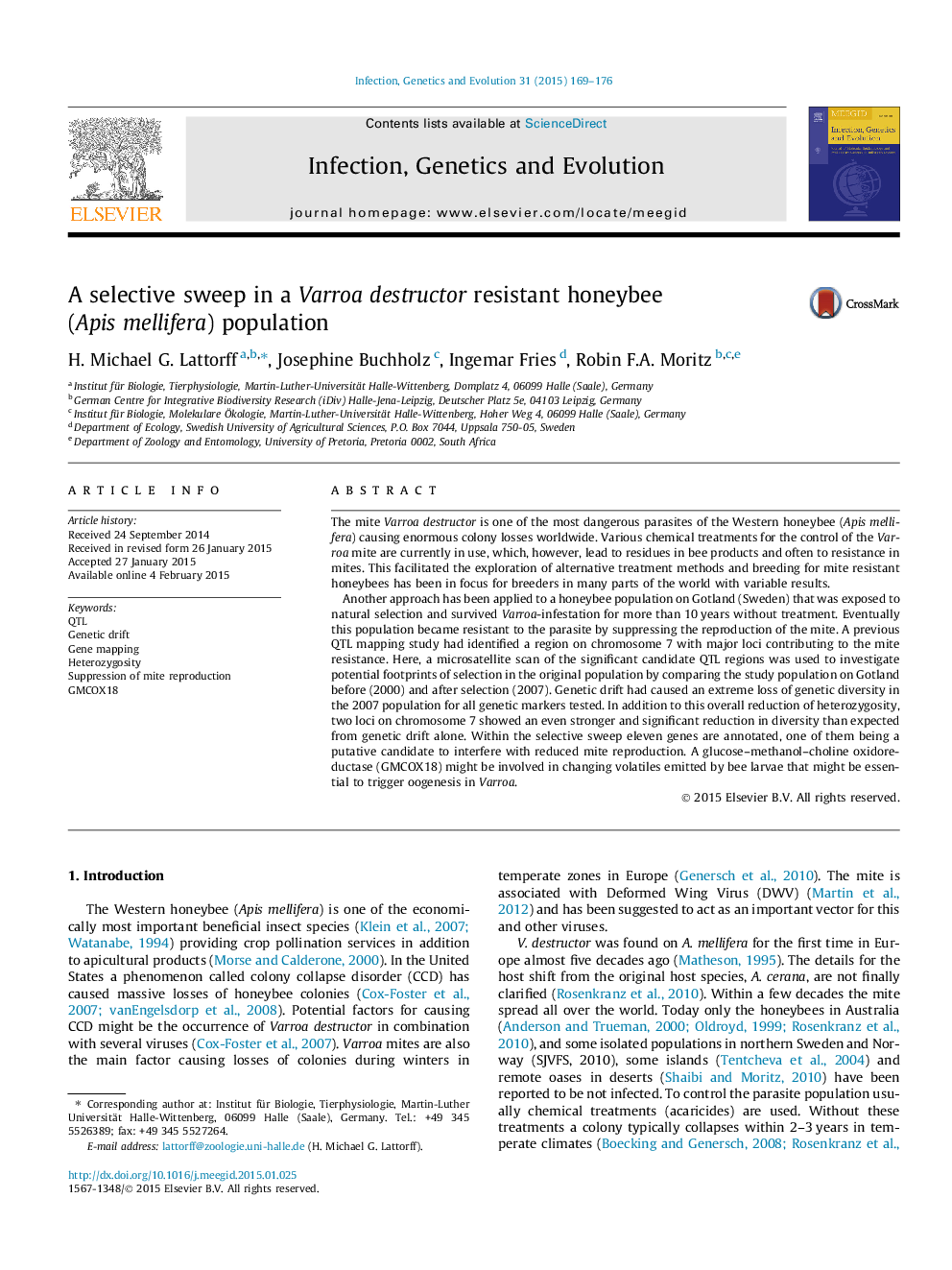| کد مقاله | کد نشریه | سال انتشار | مقاله انگلیسی | نسخه تمام متن |
|---|---|---|---|---|
| 2823014 | 1570172 | 2015 | 8 صفحه PDF | دانلود رایگان |

• A honeybee population has been selected for resistance to Varroa over 10 years.
• We examine signatures of selection within a region of a previously identified QTL.
• Despite genetic drift we detected two loci showing a signature of a selective sweep.
• Eleven annotated candidate genes are located in the selective sweep region.
• A glucose methanol choline oxidoreductase is a candidate gene for resistance.
The mite Varroa destructor is one of the most dangerous parasites of the Western honeybee (Apis mellifera) causing enormous colony losses worldwide. Various chemical treatments for the control of the Varroa mite are currently in use, which, however, lead to residues in bee products and often to resistance in mites. This facilitated the exploration of alternative treatment methods and breeding for mite resistant honeybees has been in focus for breeders in many parts of the world with variable results.Another approach has been applied to a honeybee population on Gotland (Sweden) that was exposed to natural selection and survived Varroa-infestation for more than 10 years without treatment. Eventually this population became resistant to the parasite by suppressing the reproduction of the mite. A previous QTL mapping study had identified a region on chromosome 7 with major loci contributing to the mite resistance. Here, a microsatellite scan of the significant candidate QTL regions was used to investigate potential footprints of selection in the original population by comparing the study population on Gotland before (2000) and after selection (2007). Genetic drift had caused an extreme loss of genetic diversity in the 2007 population for all genetic markers tested. In addition to this overall reduction of heterozygosity, two loci on chromosome 7 showed an even stronger and significant reduction in diversity than expected from genetic drift alone. Within the selective sweep eleven genes are annotated, one of them being a putative candidate to interfere with reduced mite reproduction. A glucose–methanol–choline oxidoreductase (GMCOX18) might be involved in changing volatiles emitted by bee larvae that might be essential to trigger oogenesis in Varroa.
Journal: Infection, Genetics and Evolution - Volume 31, April 2015, Pages 169–176